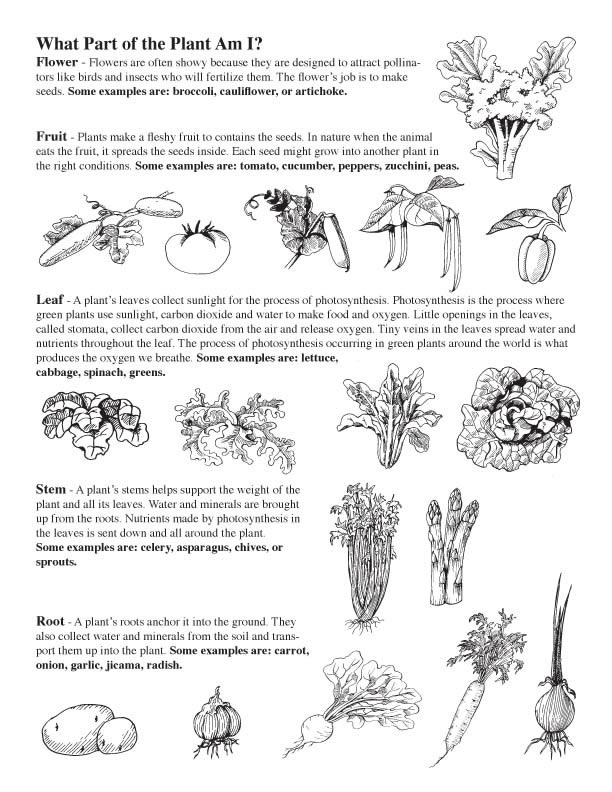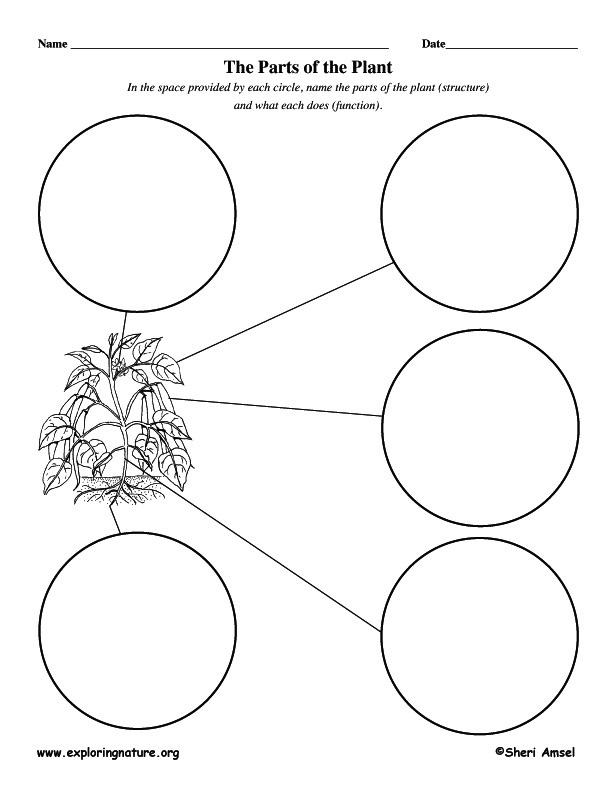

Age: Any age
Objective:
This activity will help students realize how the vegetables they eat every day are indeed plants. They will use their knowledge of plant structure to identify what plant parts they are eating. This is meant to reinforce knowledge of plant structure and increase awareness of our interconnection with the plant kingdom.
This activity is also meant to be a positive experience with "veges” while practicing basic skills of observation, and classification. It also may provides a model for healthy eating.
Procedure:
1. Students should bring in a vegetable to share. Have them choose from the following list of vegetables: broccoli, cauliflower, boiled and cooled artichoke, tomato, cucumber, green or red pepper, zucchini, peas, lettuce, cabbage, spinach, celery, asparagus, chives, sprouts, carrot, onion, garlic, jicama, potato or radish.
2. Using the following chart each child can classify their vegetable. On a piece of paper have each student draw their vegetable and label what part of a plant it is.
3. Share the vegetables at snack time.
Flower - Flowers are often showy because they are designed to attract pollinators like birds and insects who will fertilize them. The flower’s job is to make seeds. Some examples are: broccoli, cauliflower, or artichoke.
Fruit - Plants make a fleshy fruit to contains the seeds. In nature when the animal eats the fruit, it spreads the seeds inside. Each seed might grow into another plant in the right conditions. Some examples are: tomato, cucumber, peppers, zucchini, peas or string beans.
Leaf - A plant’s leaves collect sunlight for the process of photosynthesis. Photosynthesis is the process where green plants use sunlight, carbon dioxide and water to make food and oxygen. Little openings in the leaves, called stomata, collect carbon dioxide from the air and release oxygen. Tiny veins in the leaves spread water and nutrients throughout the leaf. The process of photosynthesis occurring in green plants around the world is what produces the oxygen we breathe. Some examples are: lettuce, cabbage, spinach, greens.
Stem - A plant’s stems helps support the weight of the plant and all its leaves. Water and minerals are brought up from the roots. Nutrients made by photosynthesis in the leaves is sent down and all around the plant. Some examples are: celery, asparagus, chives, or sprouts.
Root - A plant’s roots anchor it into the ground. They also collect water and minerals from the soil and transport them up into the plant. Some examples are: carrot, onion, garlic, jicama, radish.
Discussion: Ask the kids to try and identify other things they use that are plants. Paper, pencils, desks and chairs from trees. Their wood homes are made from plants (trees). T-shirts and jeans from cotton. Breakfast cereal, cookies, cakes are made from wheat and other grains. Even sugar and honey are from plants. *As a treat you can pass out cookies and show that the ingredients if all about plants. Wheat, sugar, vegetable oil.
When you research information you must cite the reference. Citing for websites is different from citing from books, magazines and periodicals. The style of citing shown here is from the MLA Style Citations (Modern Language Association).
When citing a WEBSITE the general format is as follows.
Author Last Name, First Name(s). "Title: Subtitle of Part of Web Page, if appropriate." Title: Subtitle: Section of Page if appropriate. Sponsoring/Publishing Agency, If Given. Additional significant descriptive information. Date of Electronic Publication or other Date, such as Last Updated. Day Month Year of access < URL >.
Amsel, Sheri. "Plant Party - Garden Harvest Learning Activity" Exploring Nature Educational Resource ©2005-2024. March 26, 2024
< http://www.exploringnature.org/db/view/1234 >


